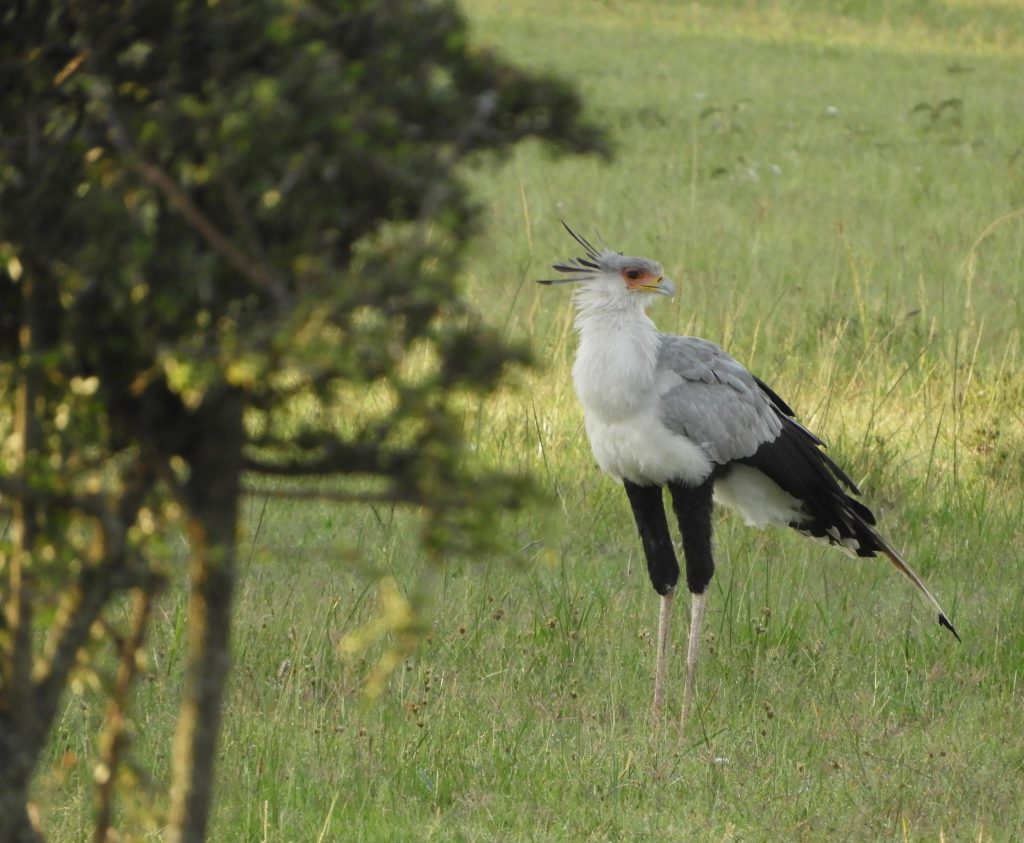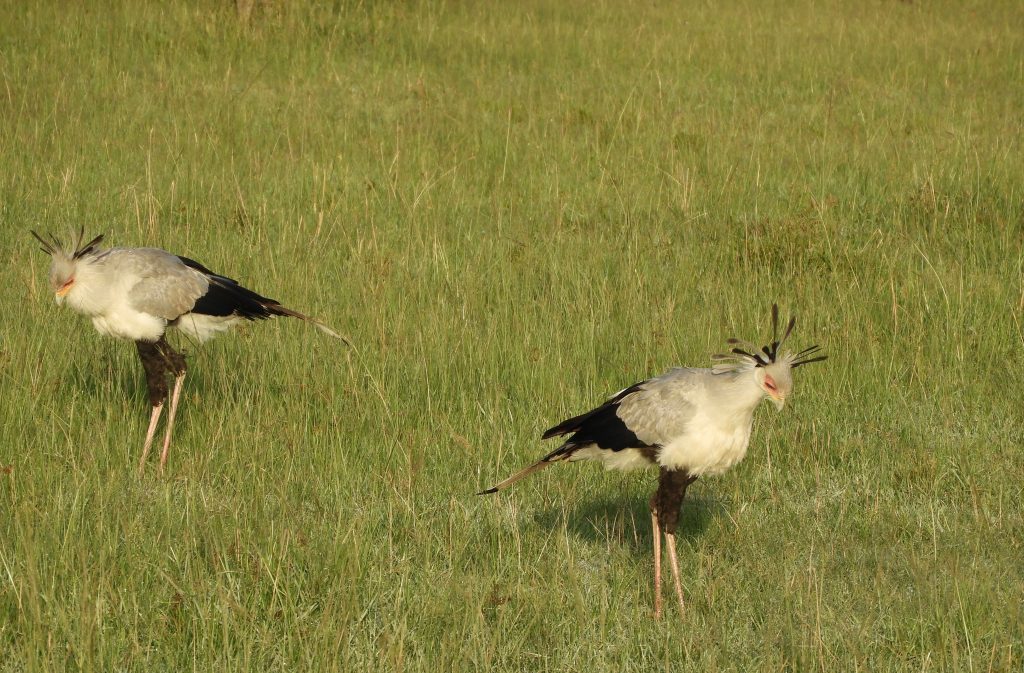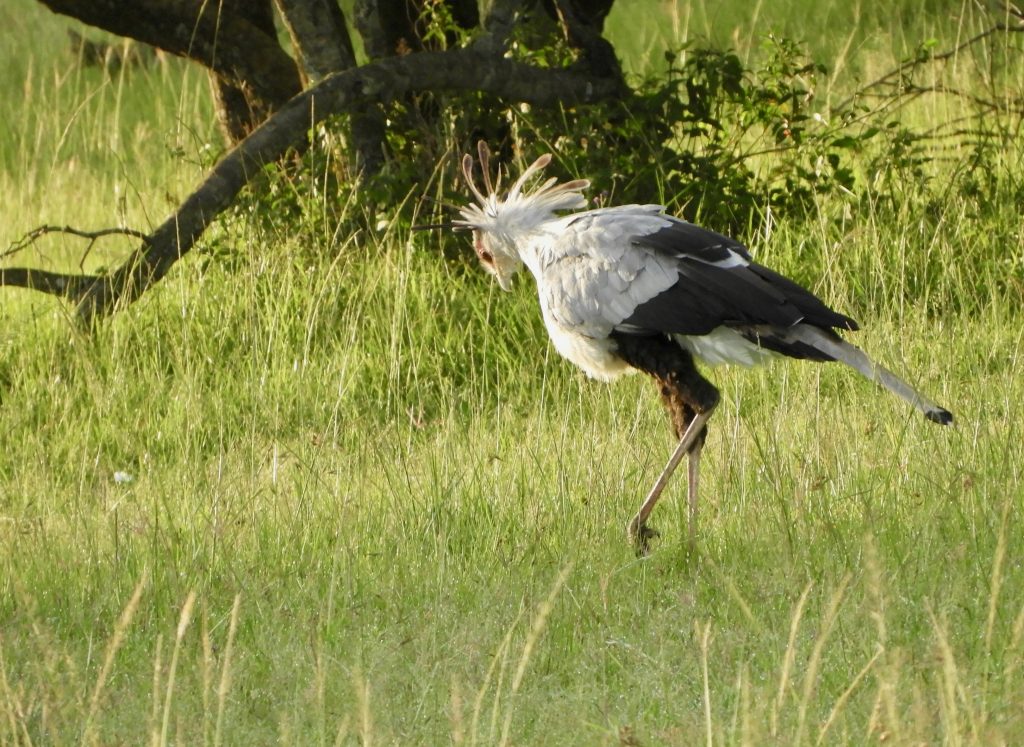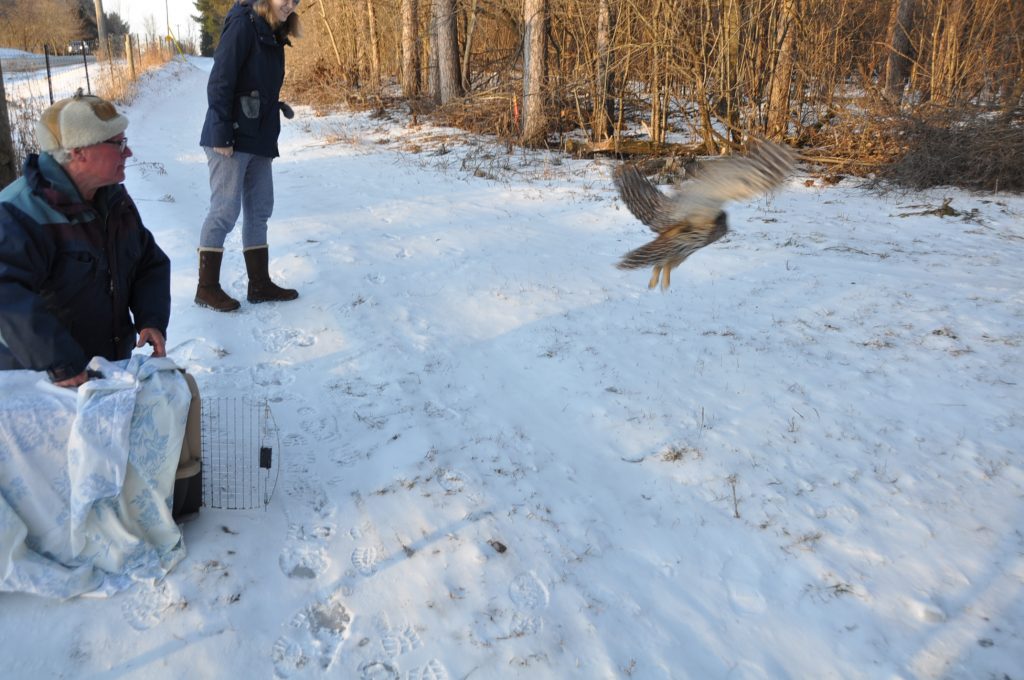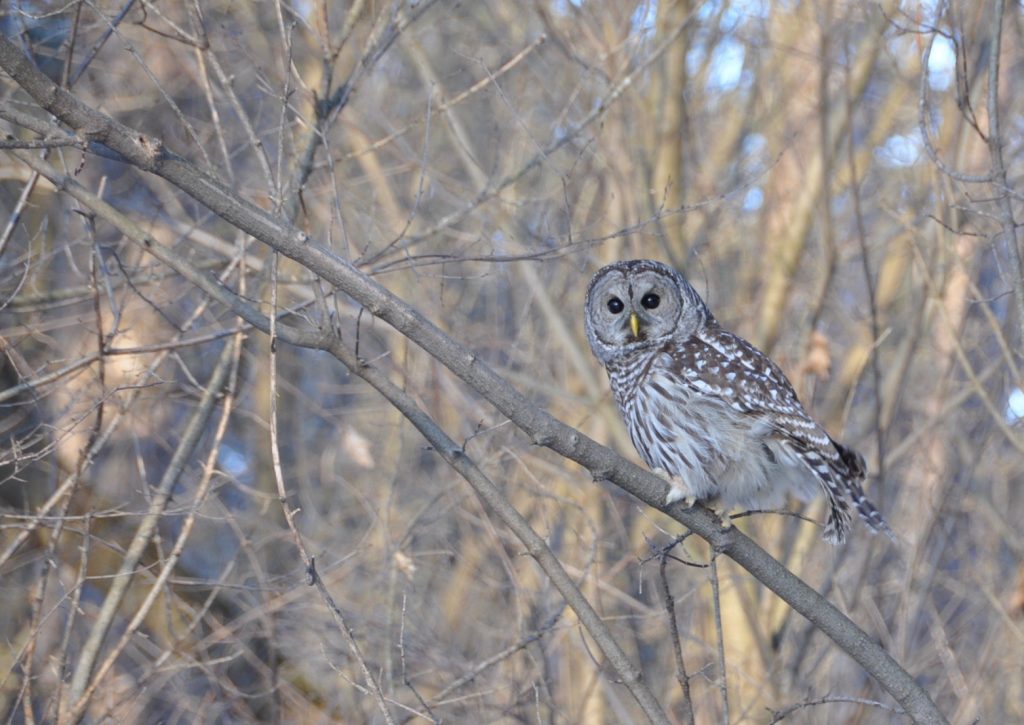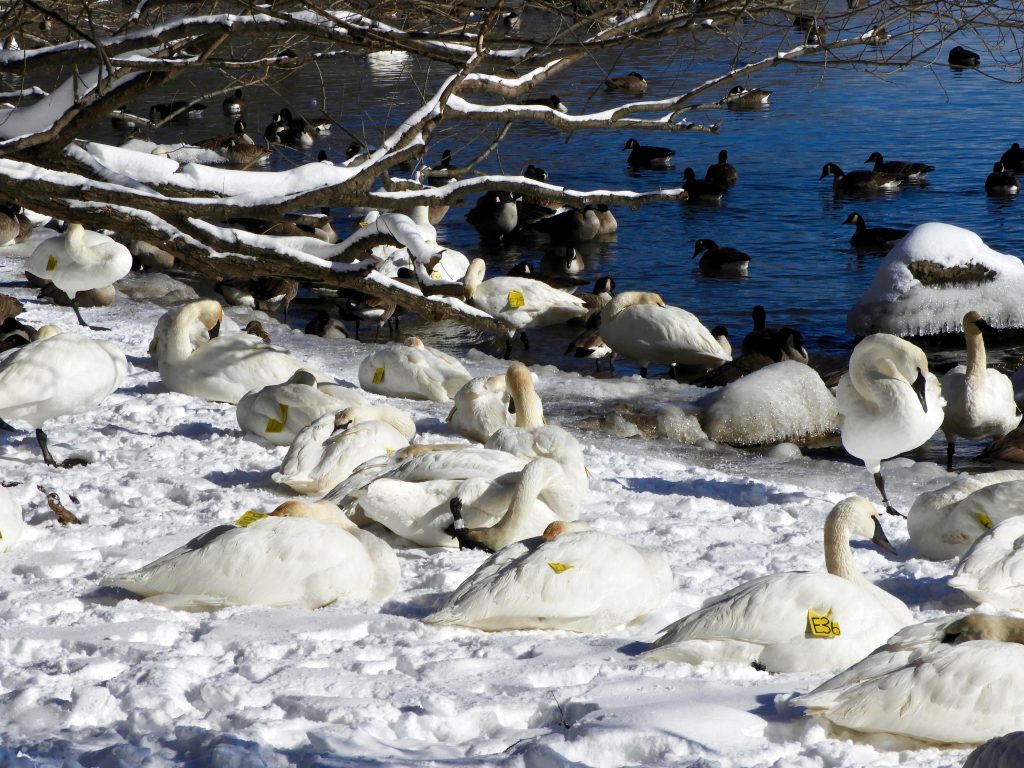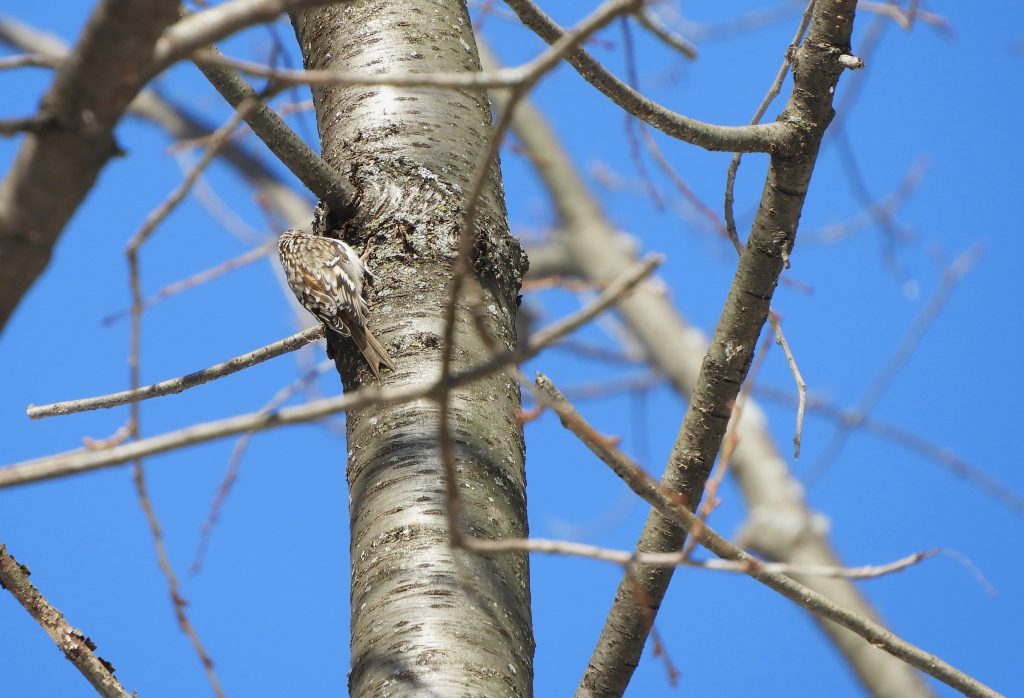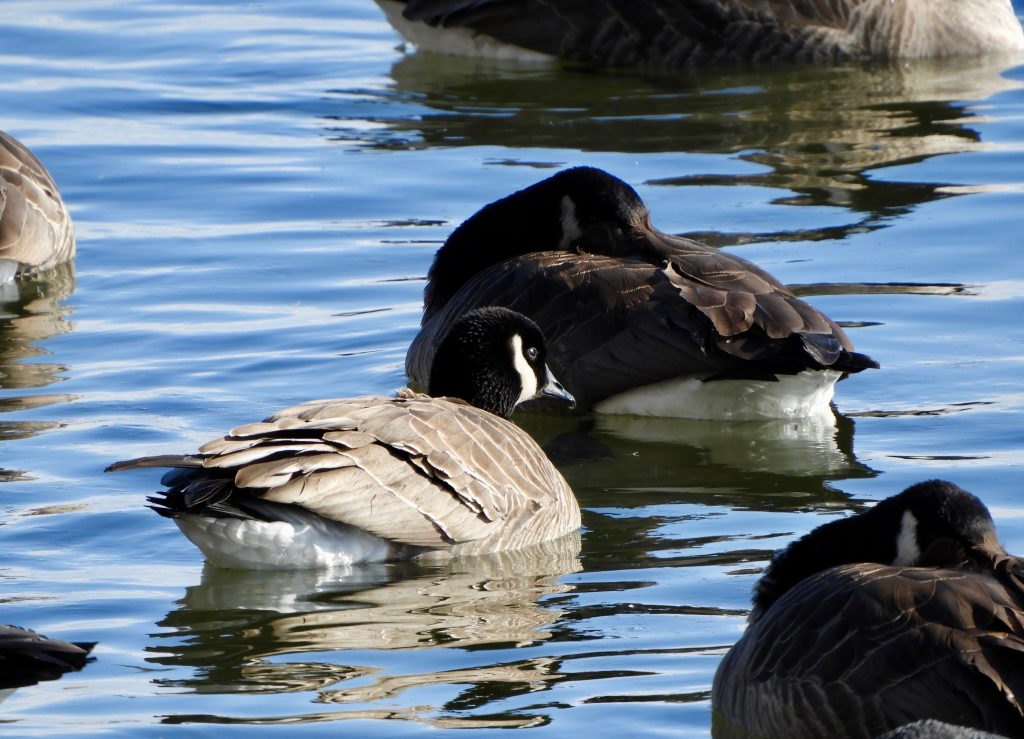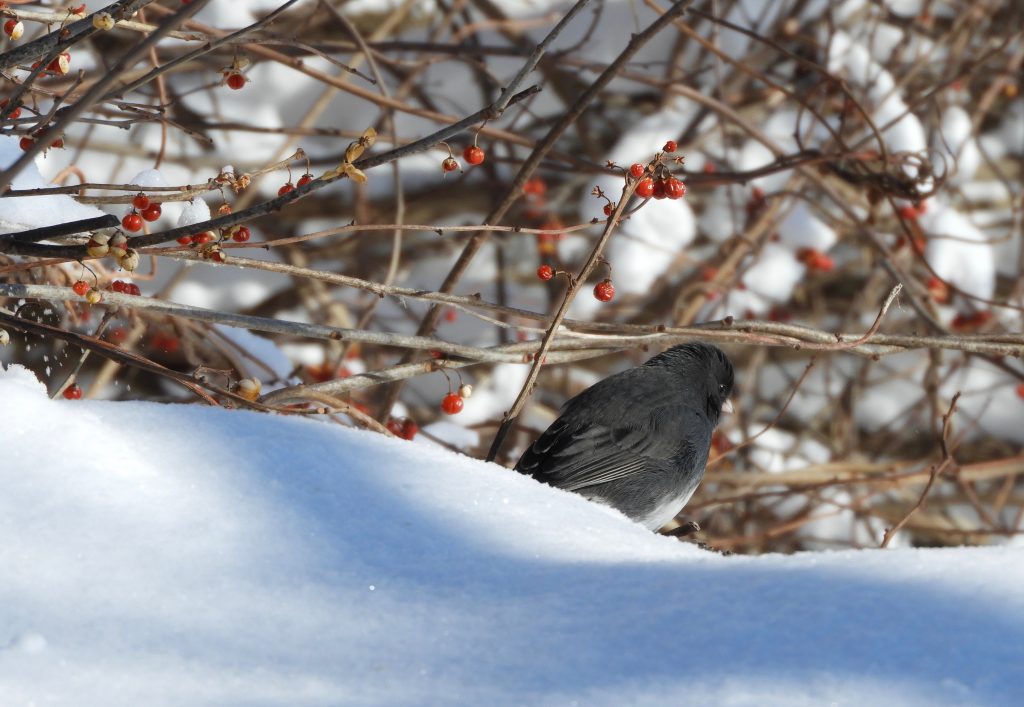February 10 2019. Enonkishu Conservancy, Kenya. It is easy to recall the strangest birds seen or heard on any day, my encounter with Southern Ground-hornbill was one of those strange ones. Here it is.
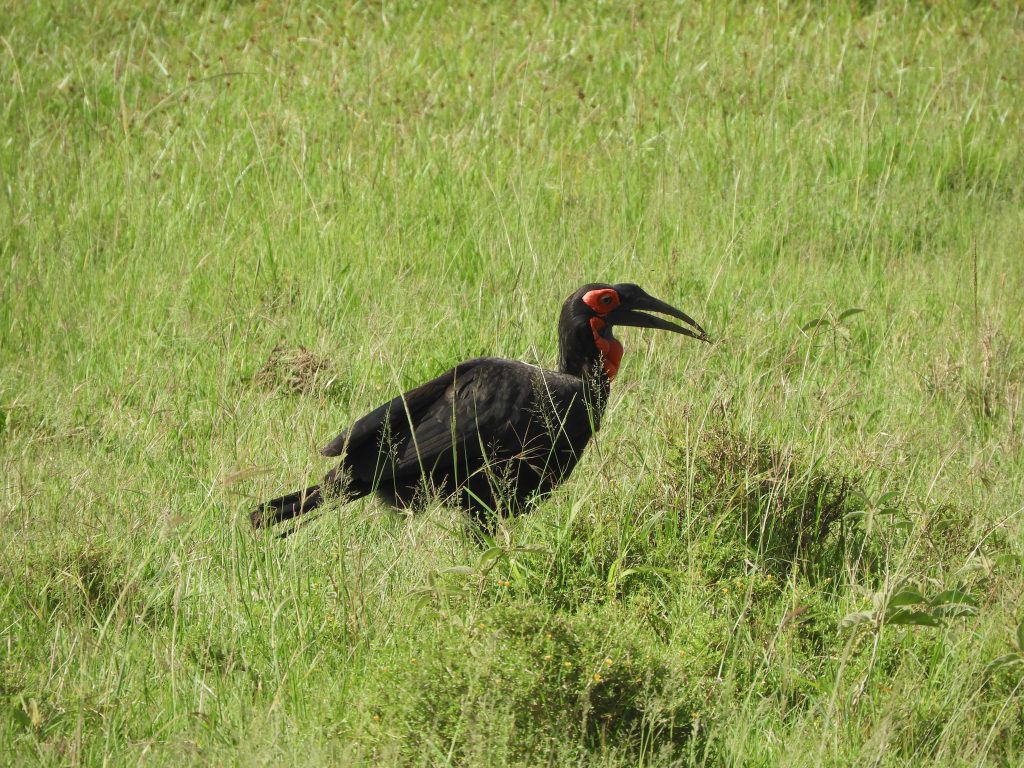
Southern Ground-hornbills belong in the Ground Hornbill family, distinct from the more numerous Forest Hornbills crowd. The Ground Hornbill family has just two member species, this and the Abyssinian Ground-hornbill; almost indistinguishable. I’d seen Forest Hornbills before, a handful in Uganda including: Black and White Casqued Hornbill, Crowned Hornbill, and Black Casqued Wattled Hornbill, and they’re usually anywhere from a little to seriously odd-looking birds in some way. That oddness is not their fault but, as is sadly the case in nature, it has its downsides; one species, the Helmeted Hornbill of south-east Asia, is being poached to extinction for its elongated, ivory-like rostrum or casque (the elaborate ornament on their upper mandible).
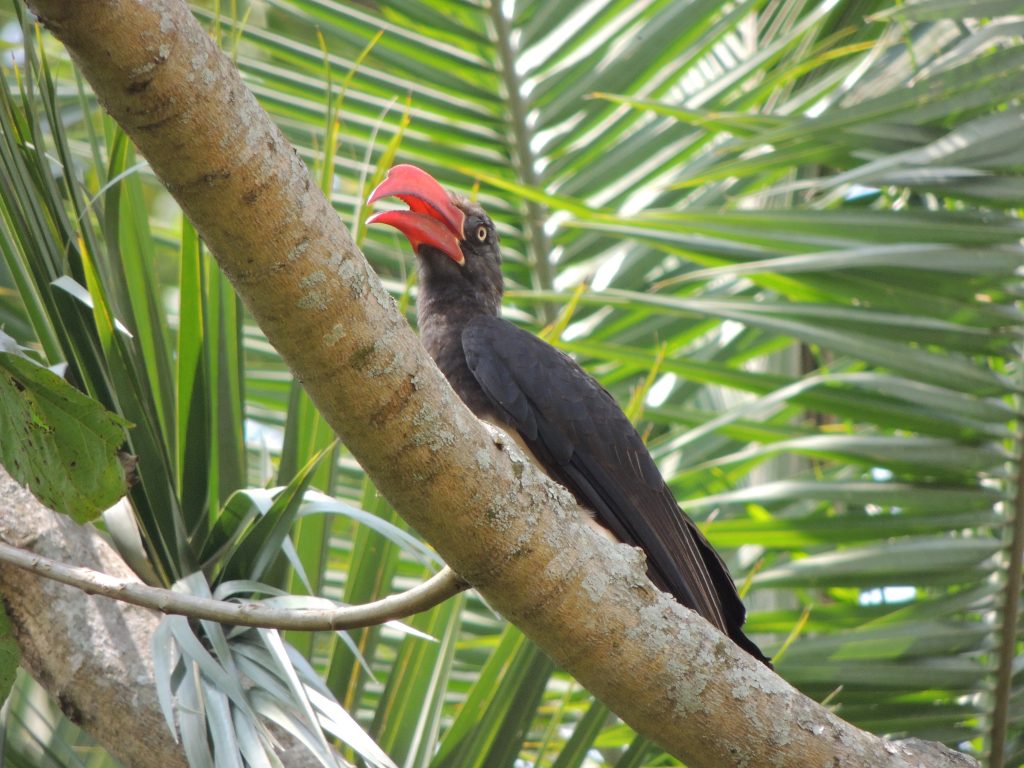
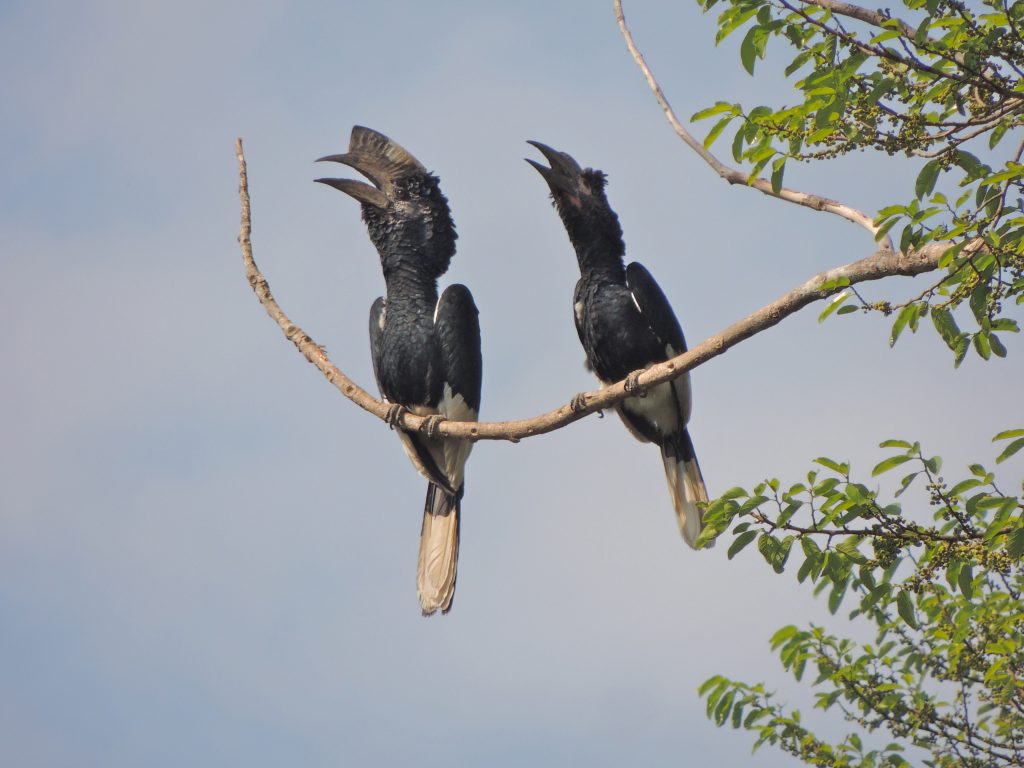
This Southern Ground-hornbill was hard to miss. As the field guide, Birds of East Africa, says of the Ground Hornbill family, “..atypical pedestrian hornbills adapted to ground dwelling and some of Africa’s most engaging birds….Walk over large distances to feed and only taking to trees in defence and to roost or breed..” It goes on to describe today’s as ”A very large shaggy looking black bird with bare, bright red eye and throat wattles.” Well, that just about says it all. It is a big bird, turkey size and not in the slightest concerned by our presence. I saw a small group, probably the same individuals several times in the month I spent here.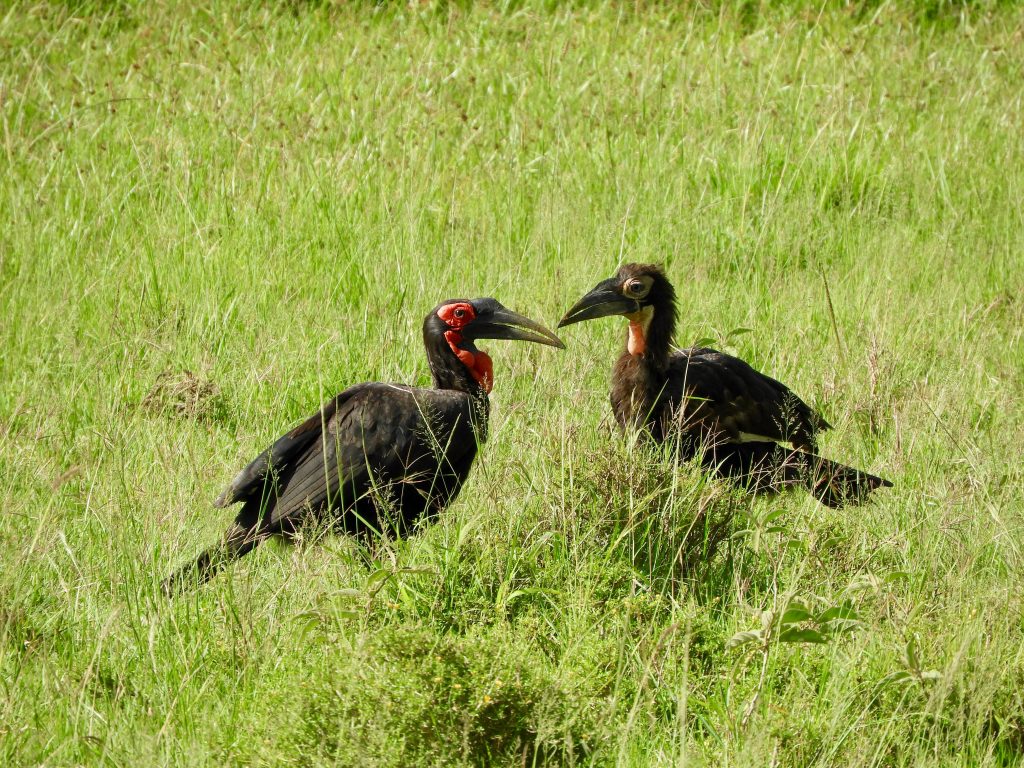
There is a footnote to this story though. Every morning while still dark and as I made my way to the ablutions block, I thought I could hear owls calling: two long and hollow notes, both very low frequency hoots, one slightly higher than the other but following in quick sucession; “WHOOOT – whooot”. Seeing owls is chancy enough at home but the odds of following an owl call to its source in Africa seemed very long indeed. It turns out that what I was hearing was almost certainly these Southern Ground-hornbills. I refer back to the field guide for the last word, “…often calls at dawn when the air is cool and still and calls can carry over long distances, a very deep reverberant booming gump-gump-rumrumrump.”
My Bird of the Day and Bird of the Morning.
